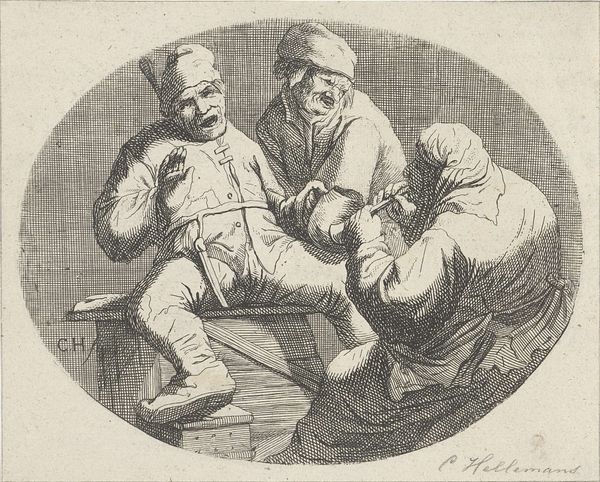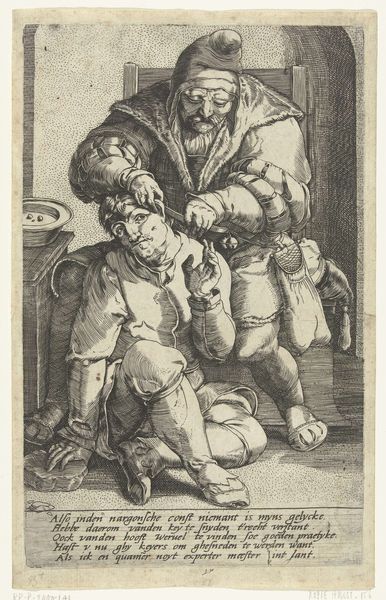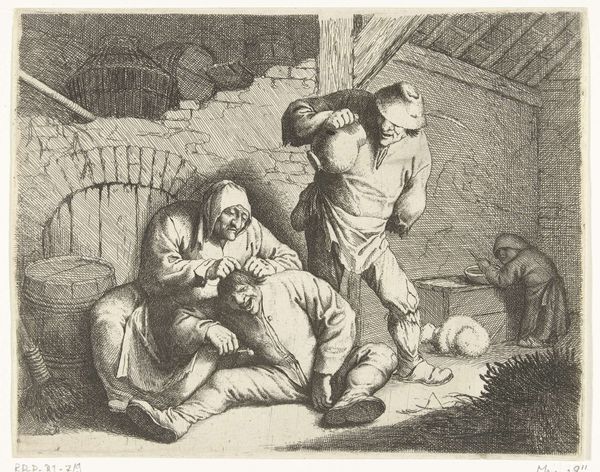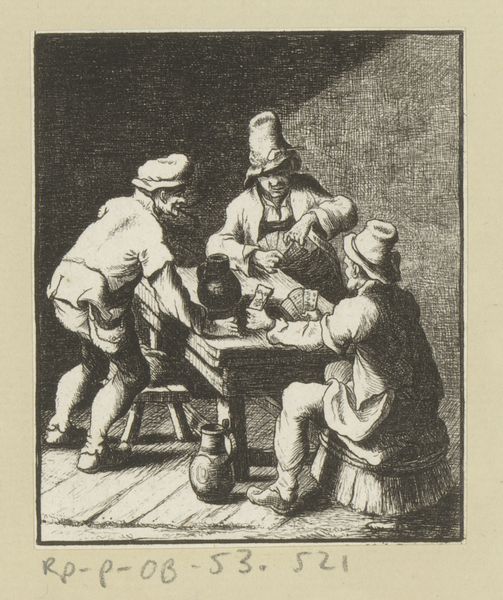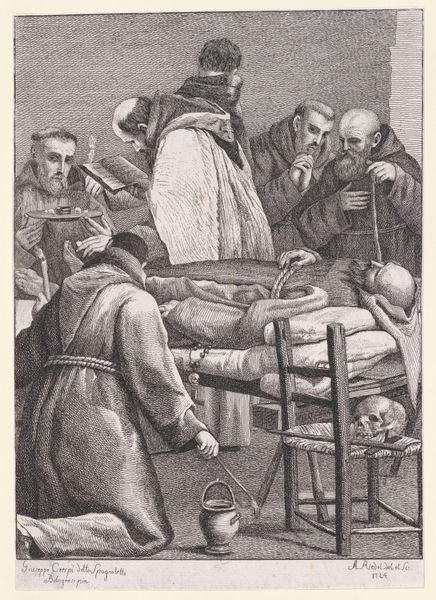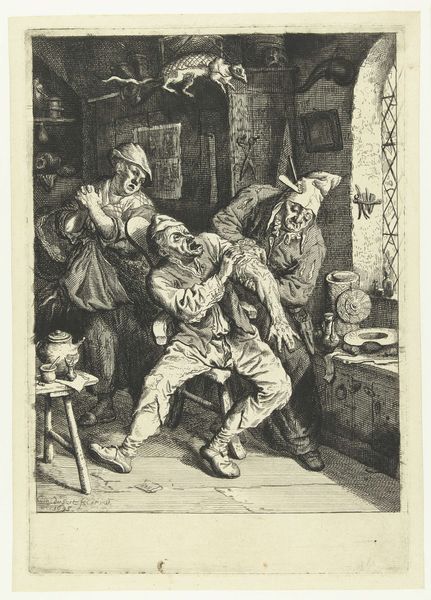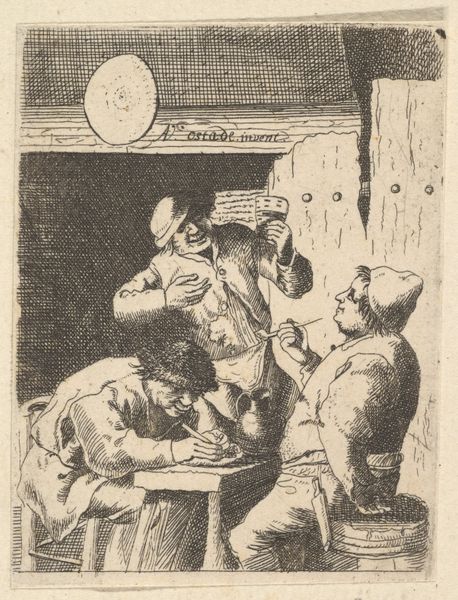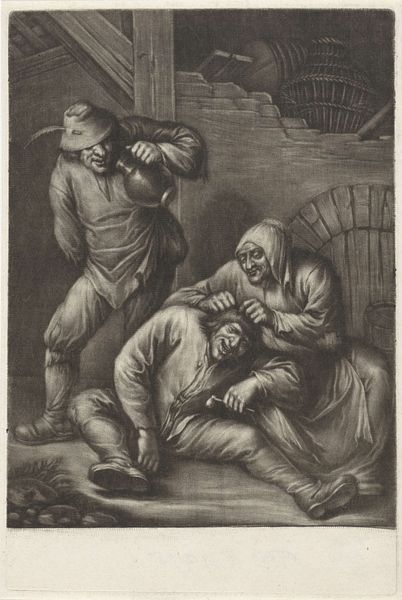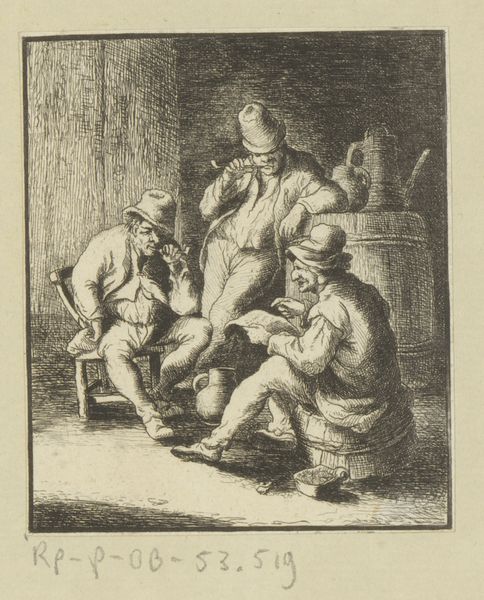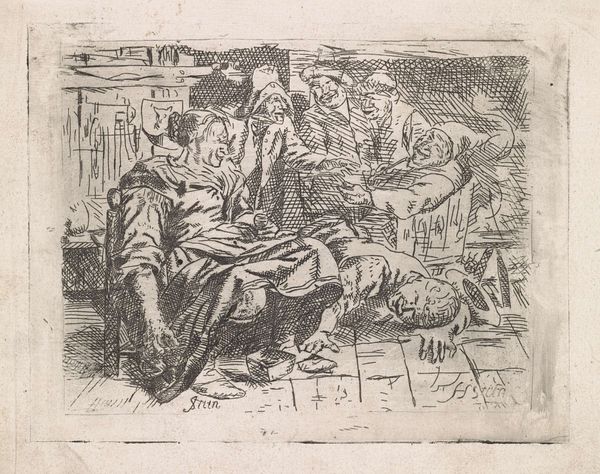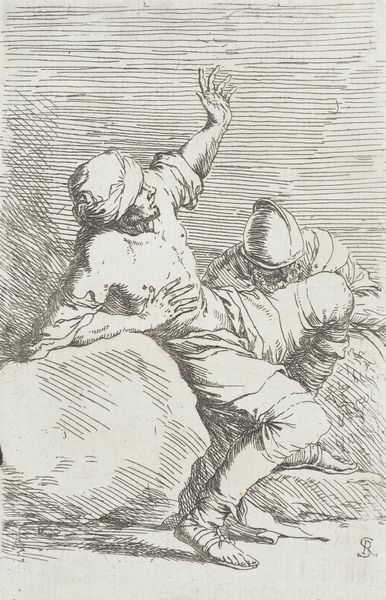
engraving
#
portrait
#
dutch-golden-age
#
caricature
#
caricature
#
figuration
#
line
#
genre-painting
#
engraving
Dimensions: height 111 mm, width 141 mm
Copyright: Rijks Museum: Open Domain
Cornelis Hellemans made this print, "Figureren met luizenkam", using etching. Images of peasants removing lice from each other’s hair were very common in the Netherlands and other parts of Europe from the sixteenth through the nineteenth centuries. These scenes spoke to contemporary issues such as hygiene, social class, and the perception of rural life. This etching uses recognizable visual codes to represent the people as belonging to a lower class of society, such as plain clothing, simple interiors and evidence of manual labor. The meaning of this image can be interpreted through the social structures of the time, particularly the divide between urban and rural populations. To understand this artwork better, we can research Dutch social history, the representation of peasants in art, and the cultural significance of hygiene in different periods. The meaning of art is always contingent on its social and institutional context.
Comments
No comments
Be the first to comment and join the conversation on the ultimate creative platform.
